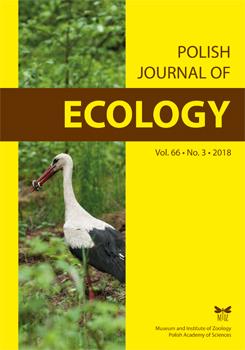The surface water microlayer (SML) is a thin layer found at the interface of the hydrosphere and the atmosphere. It is capable of accumulating chemical substances and microorganisms at a rate as high as 100-fold greater than that observed in the subsurface water. The rate of accumulation of biogens and chlorophyll
How to translate text using browser tools
1 September 2018
Air-Water Interface in an Estuarine Lake: Chlorophyll and Nutrient Enrichment
Józef Piotr Antonowicz
ACCESS THE FULL ARTICLE

Polish Journal of Ecology
Vol. 66 • No. 3
September 2018
Vol. 66 • No. 3
September 2018
air-water interface
Baltic Sea
Chlorophyll
estuary
nutrients
surface microlayer




